The flowers of obedient plants (Phytostegia virginiana) are butterfly magnets, luring swallowtails of all kinds to your garden. Read on to learn about growing obedient plant, a lovely native perennial, in your garden.
* All photos on this page were taken by me unless otherwise noted. Please provide content and photo credits to thesouthernwildgarden.com.
Why obedient plant?
While many native and ornamental plants are described as pollinator friendly, obedient plant is pollinator adored. Obedient plant’s pale purple flowers will be loved by your large bees and your little butterflies, like gulf fritillaries and sulfurs, but the stars of your late summer garden, swallowtail butterflies, will be so enamored with the flowers, you will wish you had planted it sooner. Watching these ridiculously beautiful bugs flutter around your patch of obedient plant will be the reason that you too will fall in love with this plant and look forward to its late summer blooms all year long. You will also be inclined to overlook obedient plant’s less attractive qualities like its aggressive spreading and occasional spider mite outbreak.

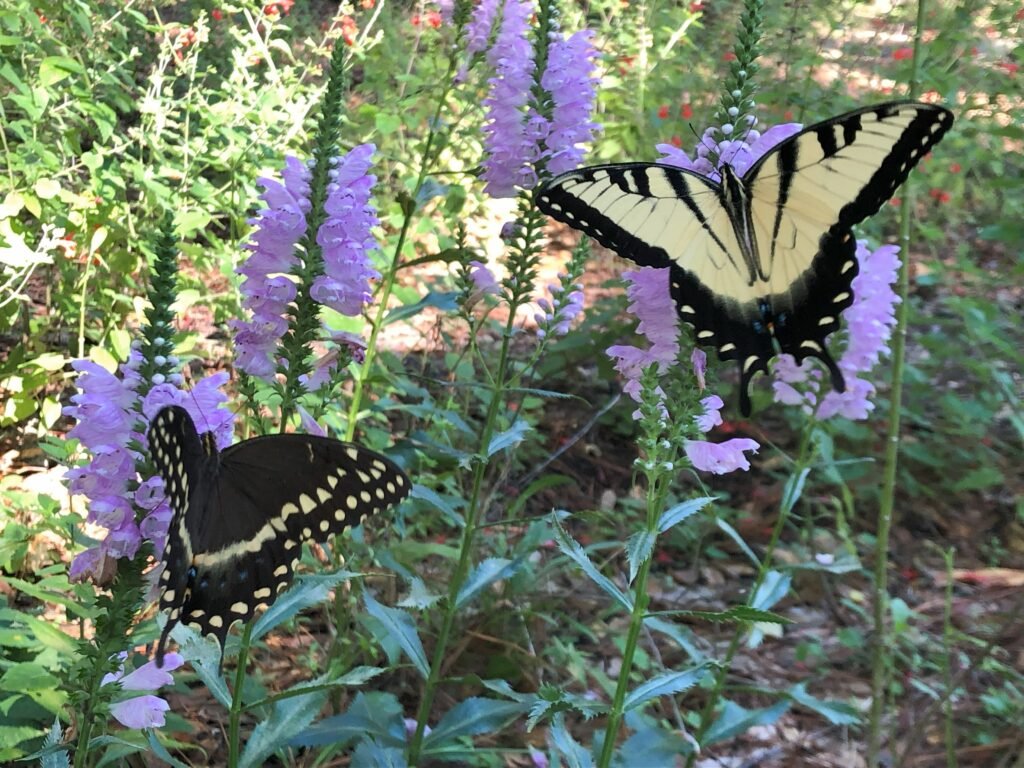
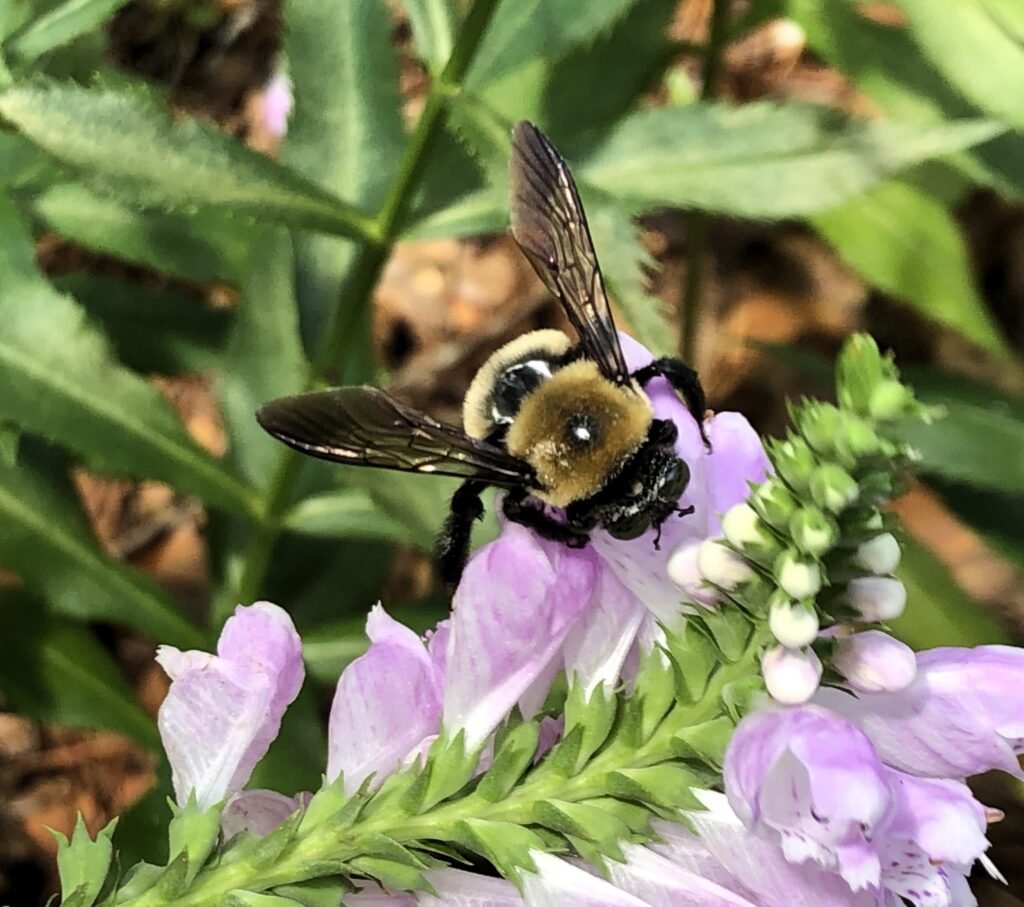
What is obedient plant?
While there are a few different species of plant referred to as obedient plant in North America, we are discussing Physostegia virginiana commonly called fall obedient plant or false dragonhead. The native distribution of Physostegia virginiana is generally throughout the eastern and midwestern US and Canada (USDA RANGE MAP). It is a perennial and a member of the mint family (Lamiaceae) and like most mints has a square stem and the flowers produce an abundance of nectar. If you bend the flower stem, the plant will “obediently” remain in that new shape for a while. This attribute obviously gave rise to the most widely used common name for the plant.
Key attributes
| Botanical Name | Physostegia virginiana |
| Hardiness Zone | 3-9 |
| Native Distribution | Midwestern and Eastern North America |
| Soil Moisture | Prefers medium to moist but will tolerate dry if shaded |
| Light | Full sun to part shade |
| Height | 2-4 feet |
| Soil Type | Any |
| Wildlife Benefits | Nectar plant for long-tongued bees, butterflies, hummingbirds |
Obedient plant will begin in the spring as a small rosette of green leaves. As the season progresses, the plant will start to produce a single erect stem that may reach up to 4 feet in height depending on your growing conditions. Leaves are long, lance-shaped and positioned in pairs along the length of the stem. As an herbaceous plant, your once green obedient plant will turn brown at the end of the growing season.


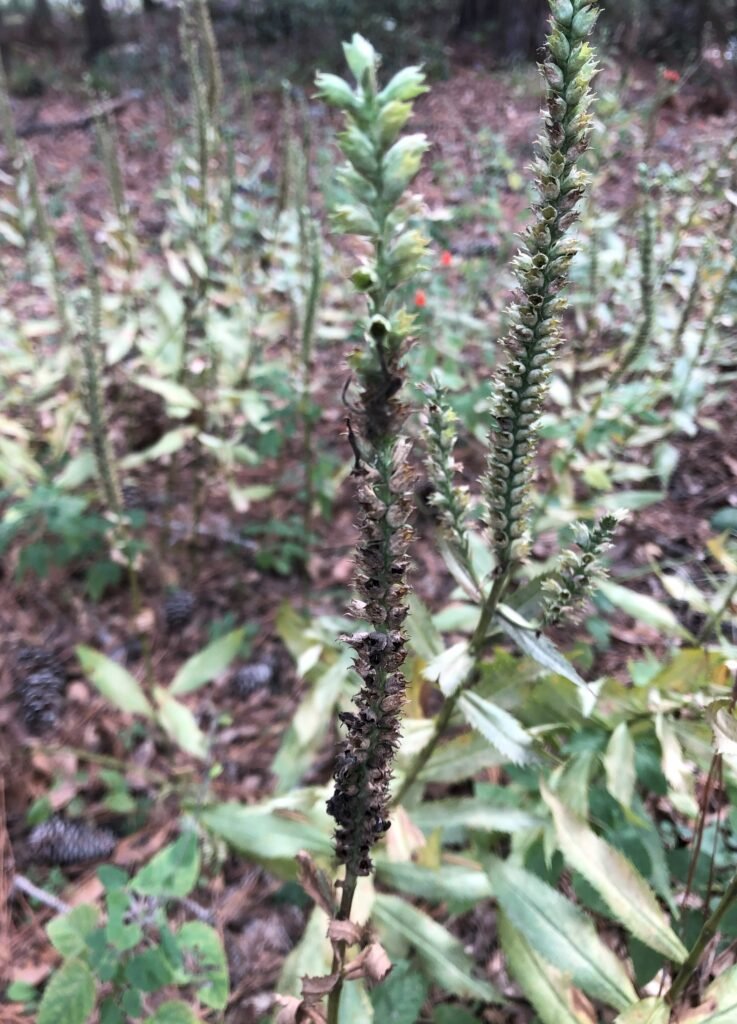
In late summer (August-September), one to three flower spikes up to 10 inches long will develop at the top of the stem, eventually opening to reveal pink to light purple tubular flowers. The flowers are tightly arranged in four horizontal lines around the flower spike. Each flower has lobes forming an upper and a lower lip, a shape which might remind you of the flowers of snapdragons or penstemons. The obedient plant’s flowers will begin opening at the bottom of the bloom spike first followed sequentially by those above. Eventually each flower will die and go to seed in the same order. Blooms are long-lasting relative to some other flowers, generally persisting for 4-6 weeks.
How to grow obedient plant?
First, check your location. It’s best to grow obedient plant within its native distribution and you’ll want to be in hardiness zones 3-9 (Hardiness Zone Map). If your garden location meets those requirements, determine whether the soil and light conditions available in your garden will make obedient plant happy. Lucky for you, this is not a very picky plant. While your garden would ideally provide your obedient plant full sun and a moist to medium wet soil, this plant will grow just about anywhere except in full hot dry sun. If you have sandy dry conditions in your garden like I do, put your obedient plant in part to full shade and while it may not get as tall, it will still produce blooms and grow with a vigor that some might find disturbing.
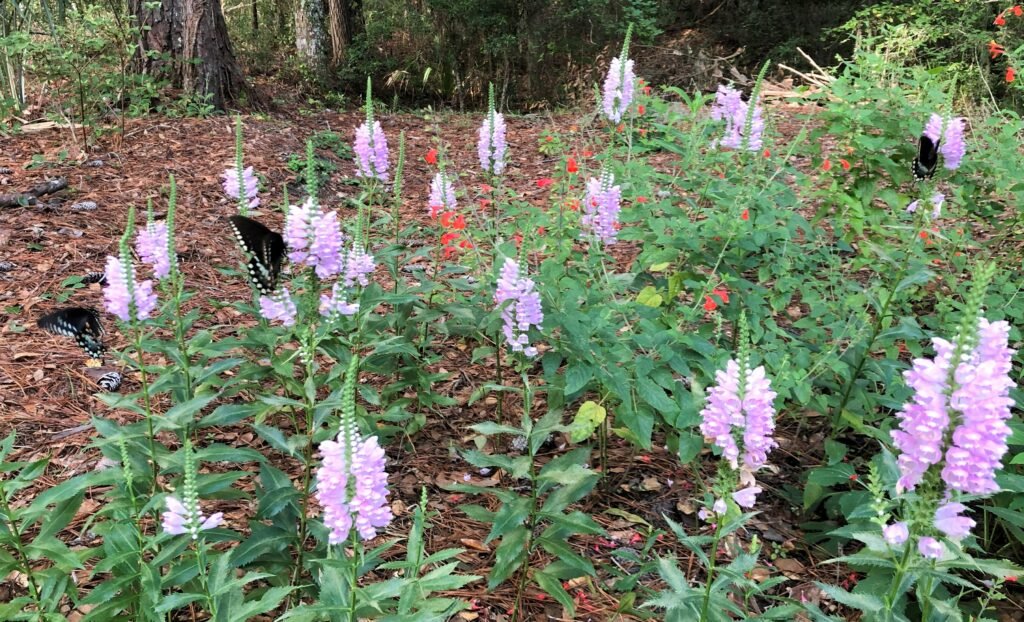
Obedient plant will spread and it may spread aggressively if it loves where it lives. While your obedient plant will reproduce by seed, you will gain most of your new growth through rhizomes, shallow roots that will spread out and sprout new plants. This behavior will eventually lead you to have a clump of obedient plant that will provide a gorgeous grouping of purple flowers in late summer.
Some of us appreciate a plant that will grow with enthusiasm and fill space in our yard with attractive wildflowers. But alas, some will not. If you find yourself in the latter category, never fear. While not entirely painless, removing unwanted new plants is relatively easy with a garden fork or small shovel in the spring since roots are shallow. Planting obedient plant with other aggressively growing species and removing seed heads in the fall may also help keep it in check. But if your tidy garden just can’t accommodate obedient plant’s exuberance, try growing it in a pot lined with a weed barrier.
Pest and Disease Issues
While generally easy and problem free, obedient plant may be prone to rust, aphids, or spider mites. It may also have leaves yellow and drop when too dry for extended periods. I generally provide some water to my obedient plants during extended periods of drought. This seems to help prevent spider mites and yellowing. Try thinning plants to increase airflow if rust becomes an issue.
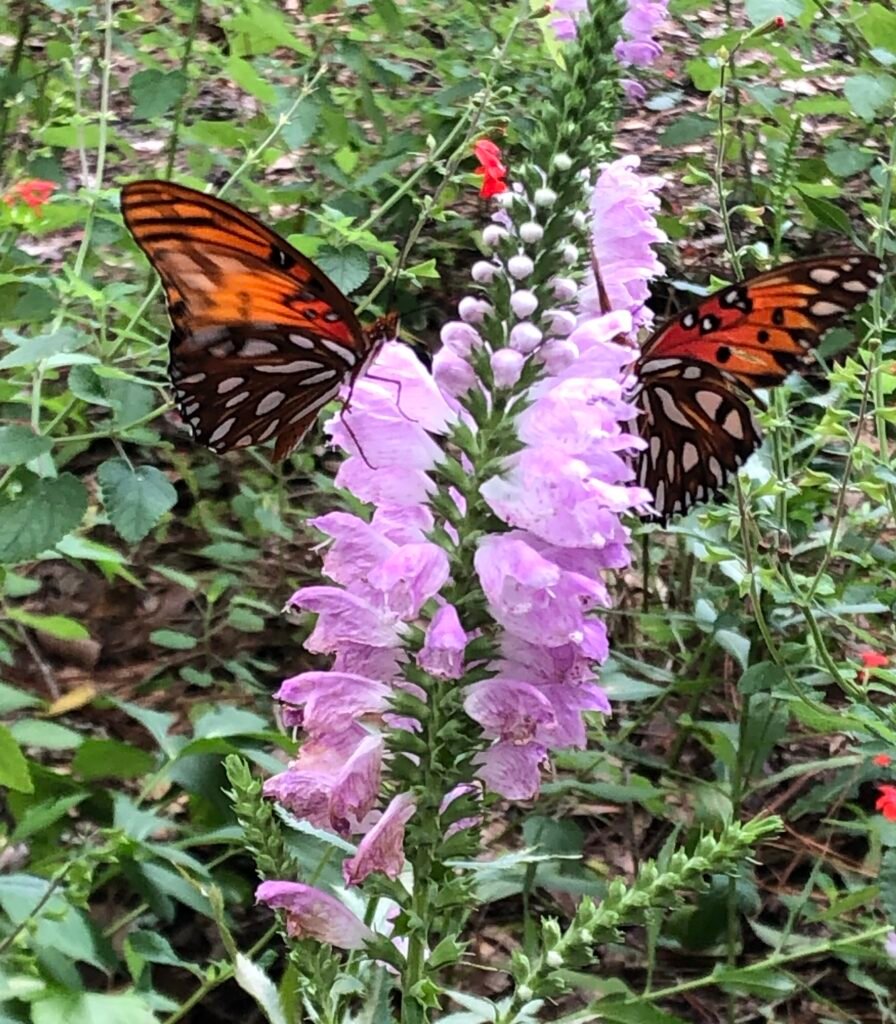
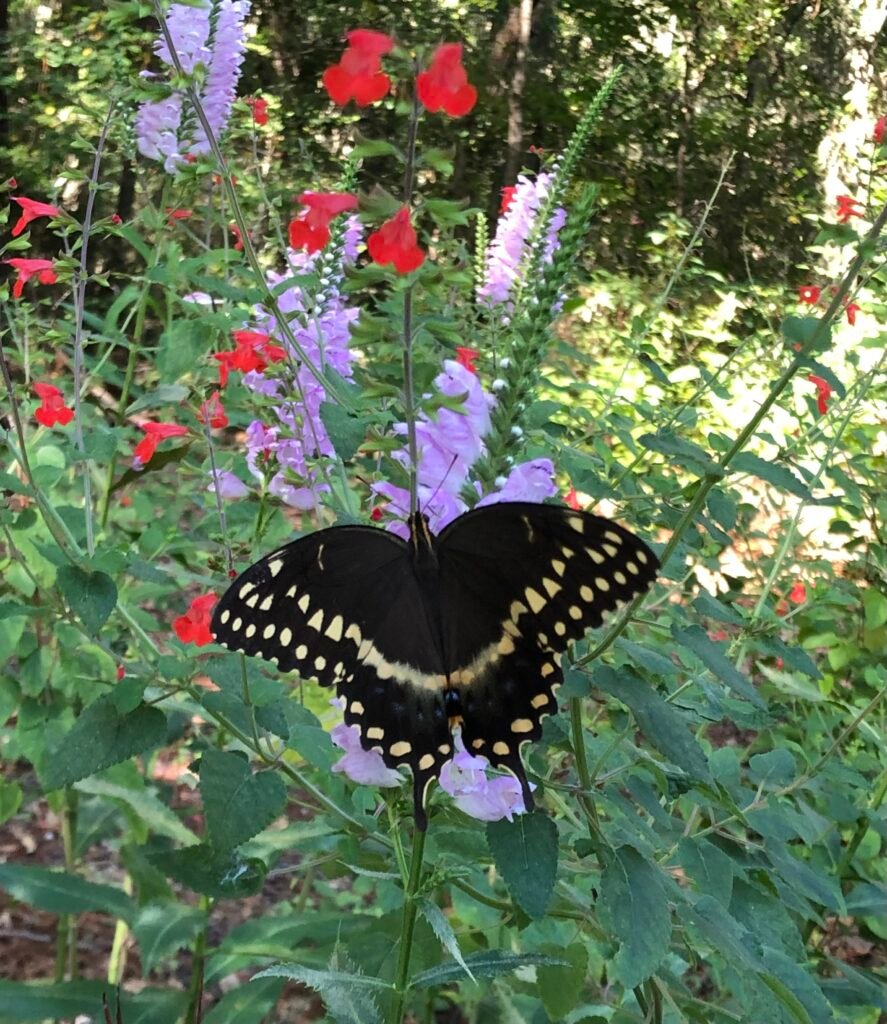
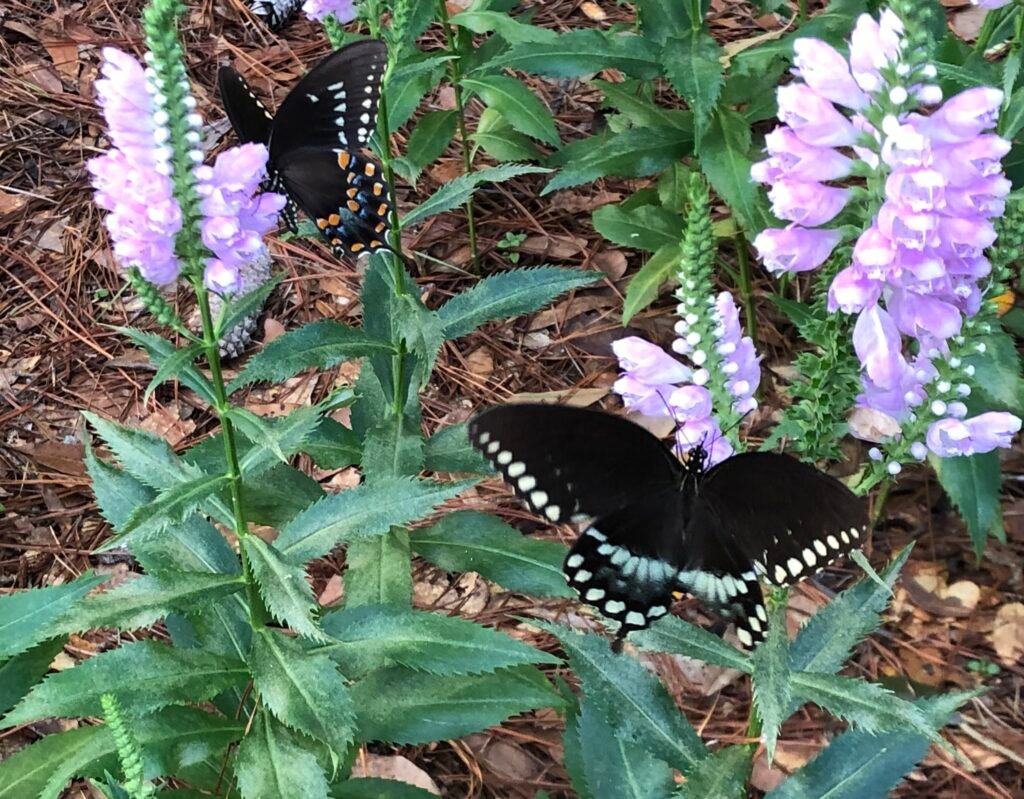
Where to get your own obedient plant?
Obedient plants are available for purchase at nurseries specializing in native plants, or as seeds or plants online. However, as with many native plants, you may have to conduct a search or patiently wait for plants to become seasonally available. I’d recommend contacting a nursery first to check availability prior to showing up in person looking for something specific. If possible, purchase the native straight species and not a cultivar, your pollinators will thank you. Below are some resources that have had obedient plant as available previously.
Nurseries in the Southern Coastal Plain:
- Florabundance Gardens in Darien, GA
- Naturescapes of Beaufort SC
- Roots and Shoots Nursery in Charleston, SC
Online resources:
- Prairie Moon Nursery
- Prairie Nursery
- Bagley Pond Perennials
- Direct Native Plants.com
- Native Gardeners
What else would you like to know?
Obedient plant is not toxic to pets or people, but you probably don’t want to eat it. As with most mints, deer and other herbivores are not likely to browse your obedient plant. Cut the flowers and enjoy your obedient plant inside.
Where can I learn more about obedient plant?
- https://growitbuildit.com/obedient-plant-101-physostegia-virginiana/Grow It Build It Blog: Obedient plant 101 – The Ultimate Grow and Care Guide!
- The Spruce: Obedient Plant (False Dragonhead): Care and Growing Guide
- North Carolina State Extension: Phytostegia virginia
- Lady Bird Johnson Wildflower Center: Fall Obedient Plant
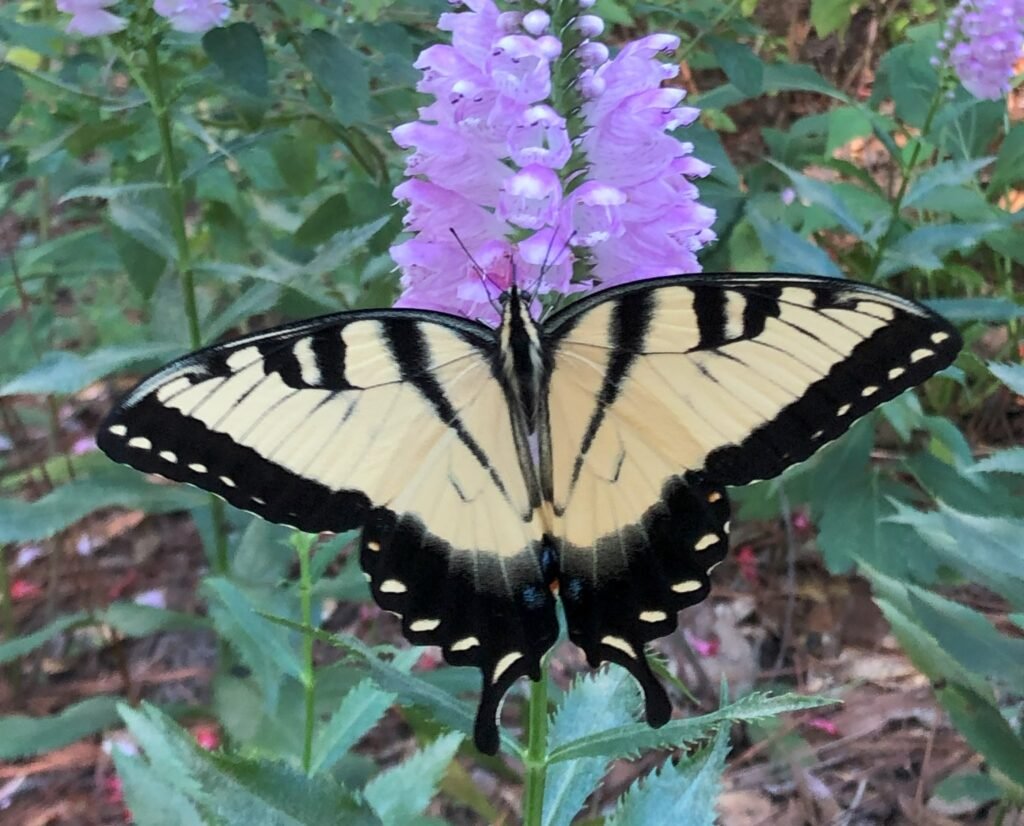
Nothing better than a plant that is easy to grow and attracts such lovely butterflies! I love mine! Thanks for spreading the word.
Pingback: The Southern Wild - Spotting Silver: How to Attract Gulf Fritillary Butterflies